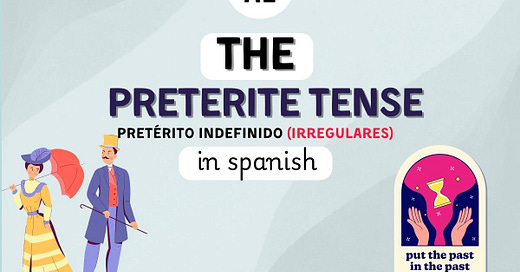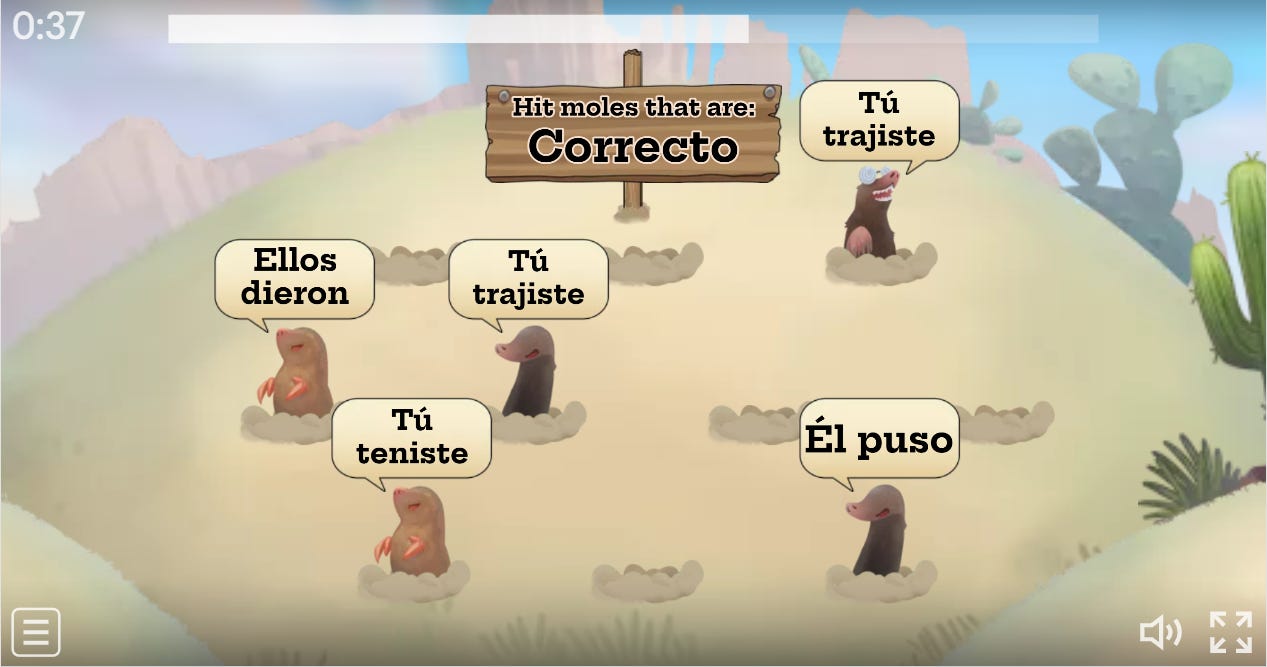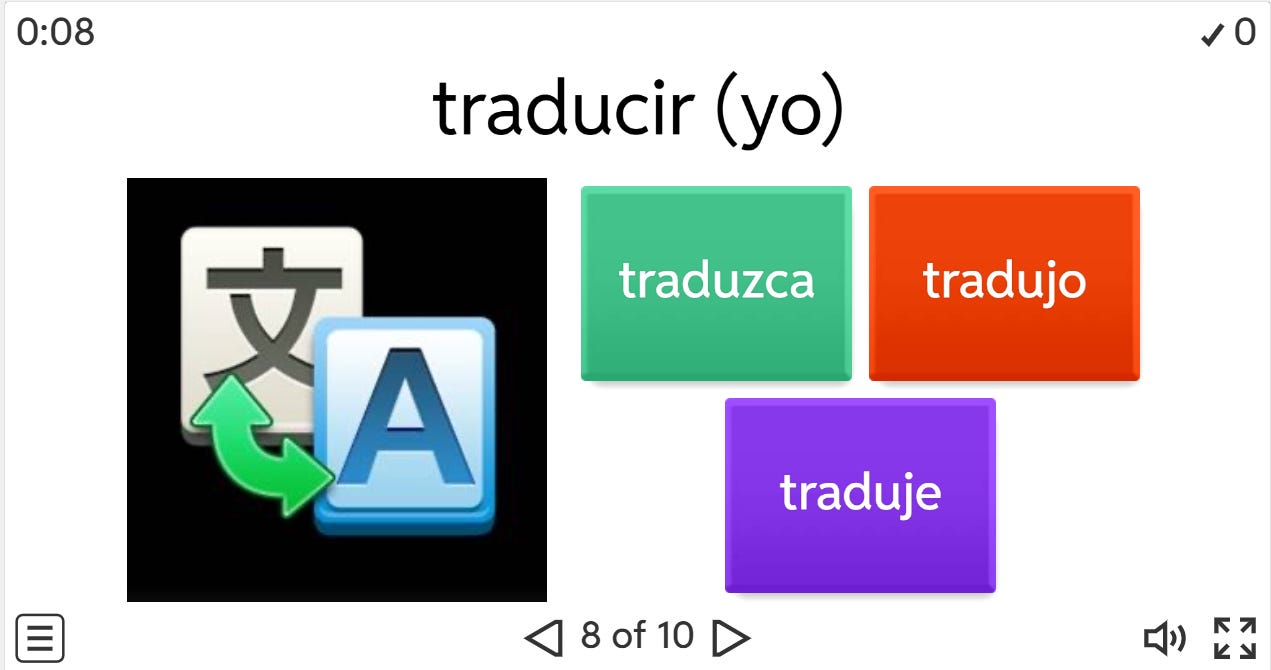Preterite Tense of Irregular Verbs in Spanish
If you’ve started diving into the past tense in Spanish, you’ve probably encountered the pretérito indefinido (simple past). While regular verbs follow predictable patterns, irregular verbs can feel like a puzzle. Don’t worry—this guide will break down the most common irregular verbs in the indefinido for A1 learners. Let’s make this fun and stress-free!
What is the Pretérito Indefinido?
The pretérito indefinido is used to talk about completed actions in the past, like “I ate” or “She went.” Regular verbs add endings like -é, -aste, -ó (for -ar verbs) or -í, -iste, -ió (for -er/-ir verbs). But irregular verbs? They play by their own rules!
The Pretérito Indefinido in a Nutshell
Use the indefinido to talk about completed actions in the past that are over, done, and not connected to the present. Think of it as the “snapshot” tense—it captures a moment or event that happened once and ended.
4 Key Situations to Use the Indefinido
1. One-Time Completed Actions
If an action happened once at a specific time and is finished, use the indefinido.
Ayer comí pizza. (Yesterday, I ate pizza.)
Viajé a México en 2020. (I traveled to Mexico in 2020.)
Terminé mi libro anoche. (I finished my book last night.)
2. Actions with a Specific Time Reference
Use the indefinido when you mention when something happened. Look for words like:
Ayer (yesterday)
La semana pasada (last week)
Hace dos días (two days ago)
En 2015 (in 2015)
El lunes, fui al médico. (On Monday, I went to the doctor.)
Hace una hora, hablé con Juan. (An hour ago, I spoke with Juan.)
3. A Series of Completed Actions
Use the indefinido to list actions that happened one after another in the past.
Me desperté, me duché, y salí de casa. (I woke up, showered, and left home.)
Estudié, hice la tarea, y vi una película. (I studied, did homework, and watched a movie.)
4. Actions That Interrupt Another Ongoing Action
When one action (in the indefinido) interrupts another longer action (in the imperfecto), use the indefinido for the interruption.
Miraba la TV (imperfecto) cuando sonó el teléfono (indefinido).
(I was watching TV when the phone rang.)Caminaba por el parque (imperfecto) cuando vi un perro (indefinido).
(I was walking in the park when I saw a dog.)
When NOT to Use the Indefinido
The indefinido is not used for:
Habits or repeated actions (use the imperfecto):
Cuando era niño, jugaba fútbol. (As a kid, I used to play soccer.)
Descriptions (weather, feelings, age, etc. – use the imperfecto):
Hacía sol y tenía calor. (It was sunny, and I was hot.)
Actions still connected to the present (use the pretérito perfecto):
Hoy he comido paella. (Today, I have eaten paella.)
Verbs Irregular in All Forms
Ser (to be) / Ir (to go)
These two verbs are identical in the indefinido, so context tells you which one is being used.
Verbs that have the phonetic accent on the root
Hit the moles that are using the correct irregular form
Click here to practice
Choose the correct verb conjugation
Click here to practice
Organize the sentences
Click here to practice
🚀 Want to Learn More?
📅 Book a 1-on-1 Spanish Lesson with me! 👉 Click here to schedule!
🎥 Subscribe to My YouTube Channel for more fun lessons! 👉 Subscribe Now!













